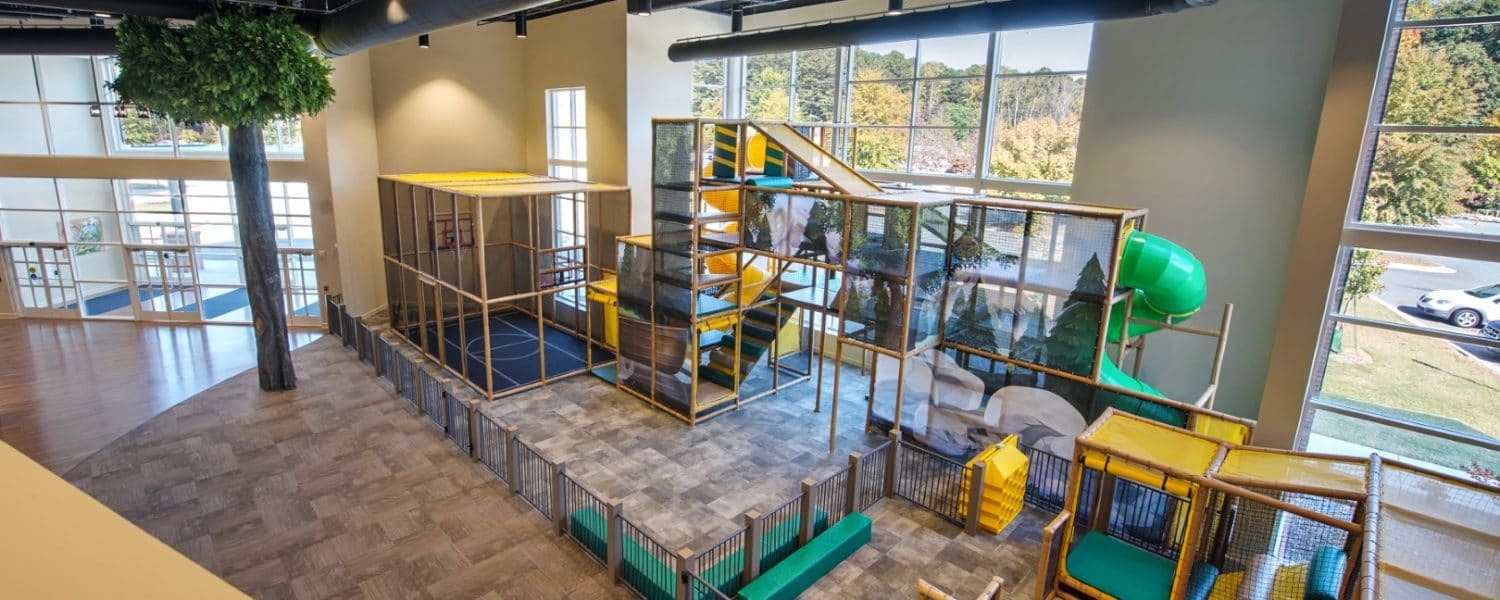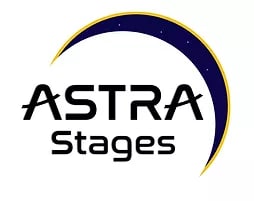By Paulla Shetterly
Church leaders throughout America search for ways to reach and inspire the “unchurched generation.” They invest a large amount of time and energy developing approaches for inviting those persons searching into church. As they strive to recruit new members or returning former attendees, these leaders also look for methods that effectively articulate the church’s message to all ages.
For those ministries wishing to grow, a themed environment has become a creative tool that shows no sign of slowing. For many church leaders, a children’s ministry is viewed as the growth engine for the foreseeable future. A vital part of this is themed environments. These designated spaces are also becoming more contemporary, serving multiple age groups with purposeful intentions.
Different Ages—Different Approaches
The key responsibility for a themed environment is to serve as the canvas or backdrop for the pastors and teachers to share the Word. These creatively designed spaces help the teacher by engaging, motivating and encouraging the audience. Because you are addressing different age groups, theming is not a “one-size-fits-all” construct. There are three main focuses for churches considering these environments: “Nursery/Pre-K & Children,” “Kids,” and “Student” ministries.
Environments for Nursery/Pre-K & Children
This is viewed by many as the primary avenue for churches to increase their congregation size and there is a novel reason for that. A colorful, vibrant, child-oriented space will consistently have children asking when the next Sunday School lesson time occurs.
Aaron Holloway, childhood pastor at Burnt Hickory Baptist Church in Powder Springs, Georgia, says that their themed environment causes “children to bring their parents to church,” a reversal of the previous way. The child is excited to attend church and thusly shares that feeling with their parents.
The concept of children-aimed theming has become more advanced by recognizing that these areas need more than simply a mural on a wall. A child-based environment must be fun and engaging so that they interact with the teacher sharing the Word. These spaces are no longer just a playground or run-around area but more a part of the teaching. By connecting with children in ways that are familiar to them, it becomes easier to reach them with the scripture lessons.
Jay Martin, administrator for Camp All American at Perimeter Church in Duluth, Georgia, says, “Theming tells our community that we really care about kids. We care enough to spend money creating environments that help them learn and have fun.”
It is important to realize that children will use these spaces to be active; therefore, you should consider creating areas that can serve more than one purpose. Some churches have small group “exercise” time, which combines physical activity with lessons from the Bible. Children are encouraged to be active partners in the lesson learning, rather than silently sitting in a chair while a story is read to them. The belief behind this type of active learning is that with the body in motion, the mind does not wander and lose focus. A properly defined themed environment can assist in this model.
Environments for Kids (K-5/Elementary)
Designing areas for this target audience requires a different tact than others. The members of this group, typically more tech-savvy than their parents, are constantly bombarded with information from various sources and at the age where the lifetime personality traits begin forming. It is important to recognize that while some content needs to be more progressive because today’s students are more open-minded, the true meanings of the Word are not to be short shrifted.
The themed environments for this age group begin to use less cartoonish-style characters and may employ non-Biblical characters to help spread the message of Christ. There can also be elements of a favorite television program or movie that are easily recognizable that more fully engages the audience. This can be addressed by designing a “theater room” or “kid’s theater,” where recorded programs/videos can be easily shown to a gathered group.
Another highlight of this age cluster is the interaction between them, meaning that open-style gathering spaces can be designed. This is a time when they begin serving their church community and learn how fellowship and working as a team is possible. Thus, they can utilize larger meeting areas over intimate classrooms.
Ray Finger, former children’s pastor at Prince Avenue Baptist Church in Bogart, Georgia, says that these spaces help communicate “the message in a very relevant way to the kids.”
Environments for Student (Middle & High School)
Designing spaces for this age group requires versatility as you are developing areas for two distinct age groups with different requirements, inclinations and levels of appropriateness.
Unique detailing and vivid artwork is often a part of creating a themed environment for middle school aged students. These design ideas run the gamut, even having stained concrete flooring for a funky look. Glitter was added to the floor sealer to create a flashy effect that reflects light and creates a youthful mood. Another inspiration was glass garage doors, framed in a contemporary metal finish, installed to divide colorful spaces and game rooms. When raised, these doors open the space up for additional seating during group events.
Creating themed spaces for today’s student-aged group allows for more sophistication and social-style gathering areas that serve multiple functions. They must be technologically sophisticated, including Wi-Fi Internet access, public computers, gaming and audio/video systems. Church leaders recognize that engaging members of this age group may occur outside of “normal” activity hours, so these spaces reflect that possibility.
Physical activity with friends and groups is also prevalent here. Themed environments include rock climbing walls, basketball cages, gyms, and game rooms. These outdoor activities and locations help make everyone feel more comfortable in the surroundings, which can also lead to members inviting non-members. The non-judgmental and welcoming atmosphere that these themed environments provide help attract that action.
Scott Maxwell, minister to students at First Baptist Church in Powder Springs, Georgia, feels that these areas are vital to increasing student attendance and introducing new individuals to what the church can offer. He says, “One of the benefits we’ve seen is that our students feel comfortable in bringing their friends here.”
This older student group also requires areas that allow for smaller crowd interaction but in a non-classroom type atmosphere. The design of a coffee-bar/café style space or a reading lounge allows these students to engage in a quieter manner. These rooms also allow for meetings outside of normal service times, as well.
The Future and Steps Your Church May Take
The best way to ensure the success of the church’s themed environment is to consult with a professional interior designer who has experience with and a passion for creating these spaces. These individuals can assist the church by providing advice on important issues such as security measures to ensure child safety, sustainability procedures and developing the backdrops to assist church leadership.
Themed environments are designed to be fun and engaging but also educational that present the church as a place where kids can be kids but also feel welcome, safe and comfortable. These spaces should capture the imagination of a child, the growing knowledge of a kid and the increasing maturity of a student. The theming should also be able to teach life lessons and biblical principles.
Paulla Shetterly is the interior design principal with CDH partners, a group of creative people who plan and design spaces that make a difference, such as hospitals, schools, churches, and much more, www.cdhpartners.com.


















